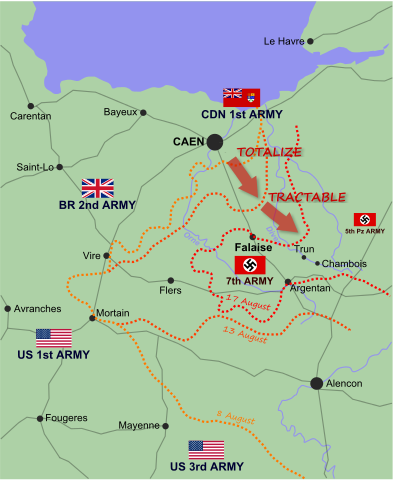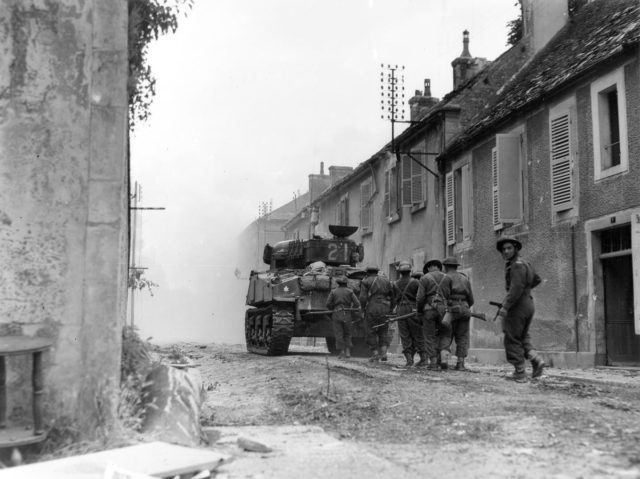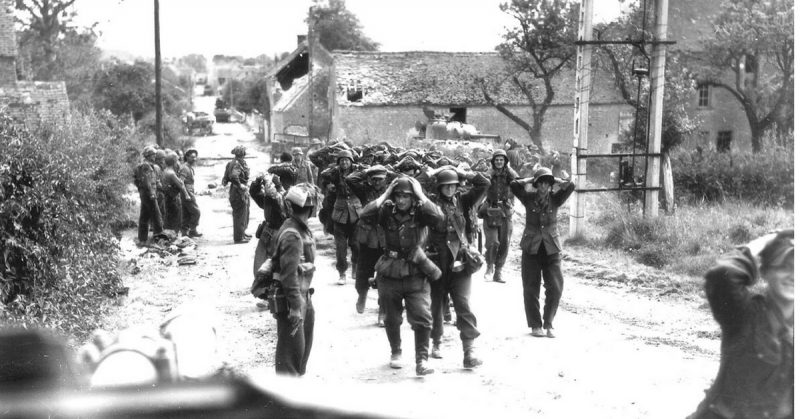Operation Tractable was a major Canadian offensive in Normandy. It was designed to break through the German line to reach the important town of Falaise. While it was successful, it resulted in the deaths of 150 Allied soldiers and 241 wounded by Allied bombers.
Its predecessor was Operation Totalize, which had used heavy bombers at night to target and destroy enemy positions from the air. Although there had been some success in using airpower in that way, there had been failures too. Most noticeably, heavy bomber support contributed to the death of Lieutenant General Lesley McNair during Operation Cobra.
After the US 1st and 3rd Armies had broken out from their beachhead during the Battle of Normandy in July 1944, Adolf Hitler launched a massive counterattack. It was eventually beaten back by the use of large-scale fighter-bomber air attacks against Nazi tanks and armor. Thereafter, forces from the German 7th Army became further enveloped by the Allied success.
Despite initial gains during Operation Totalise, Polish and Canadian forces suffered heavy casualties and their advance stalled on Hill 195, north of Falaise.
Operation Tractable began on August 14, 1944, with a bombing campaign lead by medium bombers from 2 Group, 2nd Tactical Air Force, followed by a bigger attack from Bomber Command. It was intended to knock out enemy guns and defenses across the right flank and stop any reinforcements coming into the battle zone.

It was also supposed to incorporate the lessons learned from Operation Totalise and ensure the heavy bombers and mobile infantry units operated in tandem. Bombing raids were launched during the day, not at night as had previously been attempted.
811 aircraft set off towards seven different targets. Canadian forces were within 2000 yards of those targets. Winds caused battle smoke to blow over the whole area, limiting visibility.
In total, 77 aircraft made bombing mistakes across four phases of assaults. The Haut Mensil Quarry was bombed in error when two planes from the No. 428 (RCAF) Squadron mistook smoke rising from a previous site that had been bombed by mistake as their aiming point. It set off a series of events which led to 49 aircraft dropping their payload in error.
One of the biggest criticisms against the pilots was their relinquishment of the timed run check. It would have enabled them to realize that not enough time had passed between getting over the coastline and reaching the target zone.
A report after the bombing attributed the disaster to the short notice given to the pilots as well as the job they were assigned to do was one they were not trained for. Casualty rates among heavy bombers were very high; new crews were not given much time to gain experience.

The structure of the planes meant the navigator had almost no view of the ground and the crew’s training in map reading was limited. Those two limitations show how easy it was to get a position wrong from the air and release bombs over an incorrect target.
The bombing provided vital support to the infantry and eventually succeeded in closing the Falaise Pocket. It helped to secure the surrender and destruction of the German 7th Army and trapped 150,000 soldiers in between the First Canadian Army and the Third US Army.
The Panzer Lehr and the 9th SS Panzer Division were wiped out, while the 12th SS Panzer Division lost over 90% of its armor and 70% of its vehicles.
Around 5,500 Canadians died during the Operations while the Polish forces suffered casualties of 325 killed, 1,002 wounded and 114 missing. By using troops for the role they were trained for as well as better communication, that number could have been lower.
